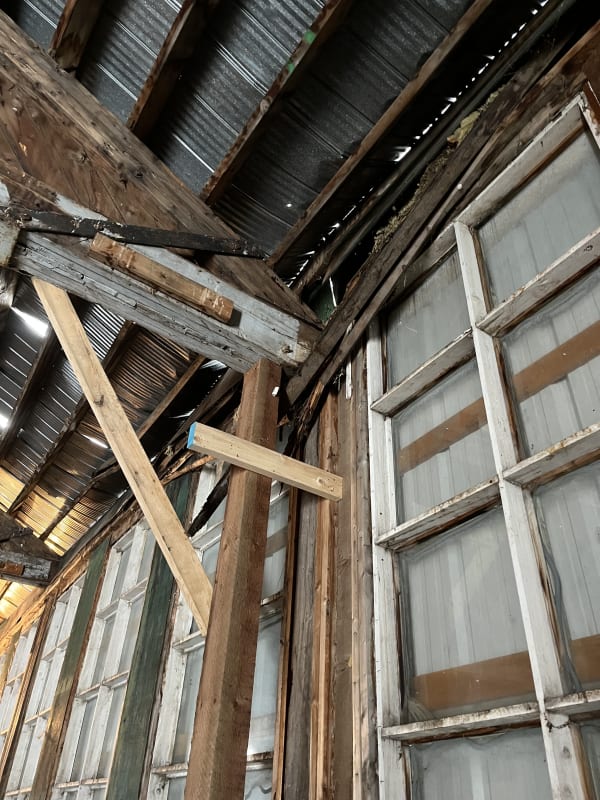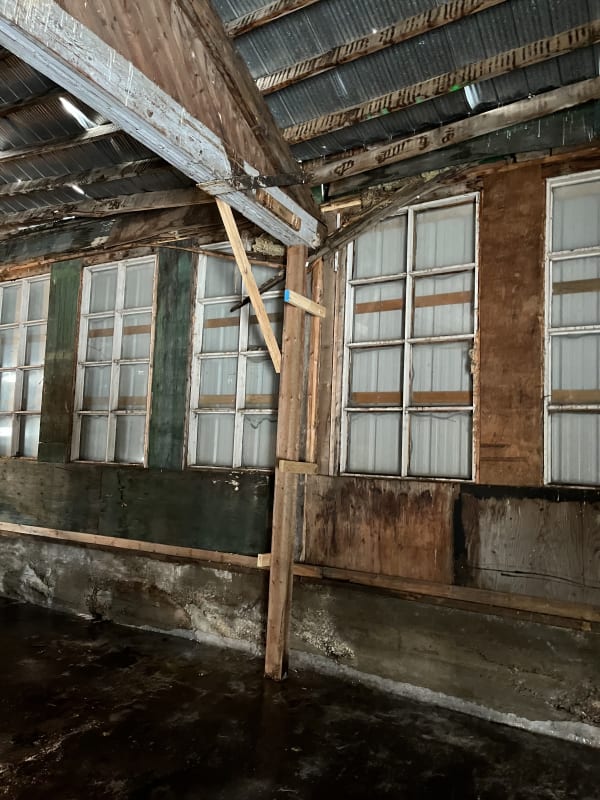Said the Sky
Structural

Hello gentlemen,
Background on the building:
Foundation appears to be concrete wall perimeter about 4ft high, should be on strip footings, SOG. Building used as “agricultural” purposes.
The building has since have a partial collapsed in high winds and high snow loading (2.5ft of snow). The failure however is those big arched trusses, one of them has fallen off its stud pack support. The top sill plates appear to be rotted but I do not believe this to be the main reason the truss fell off its post support.
I think this building has no later load resisting system. The truss and post are not built as moment frames. The posts are stud packs and do not appear to be moment connected into the ground to provide lateral support. No knee bracing for moment frame action.
So my thoughts are the sheet metal is transferring the horizontal wind loads to the wall and thus pushed the truss off the post support.
Anybody has any ideas if my assumptions are correct?
Thanks!

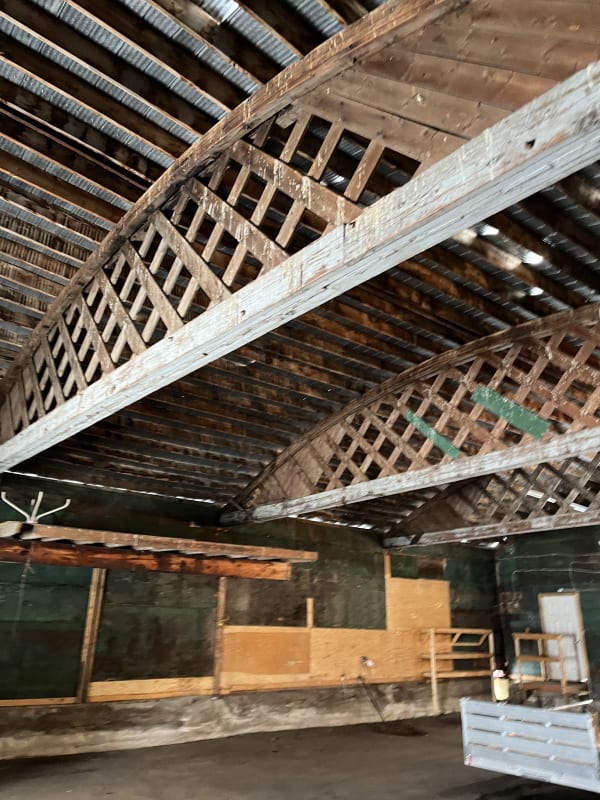
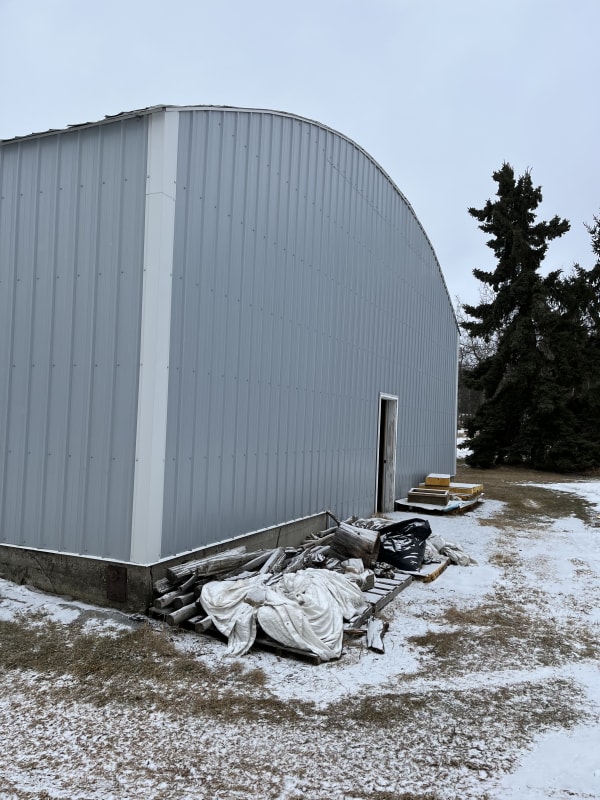
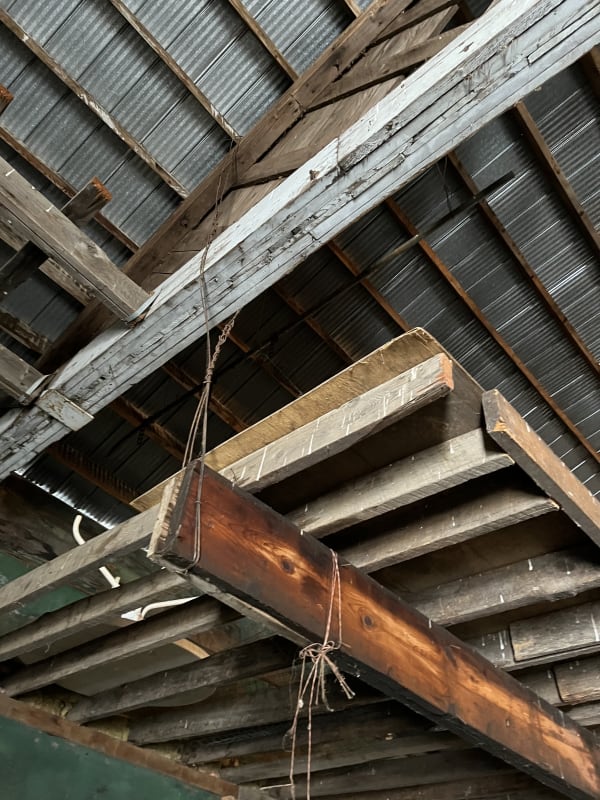
![[ponder] [ponder] [ponder]](/data/assets/smilies/ponder.gif)
